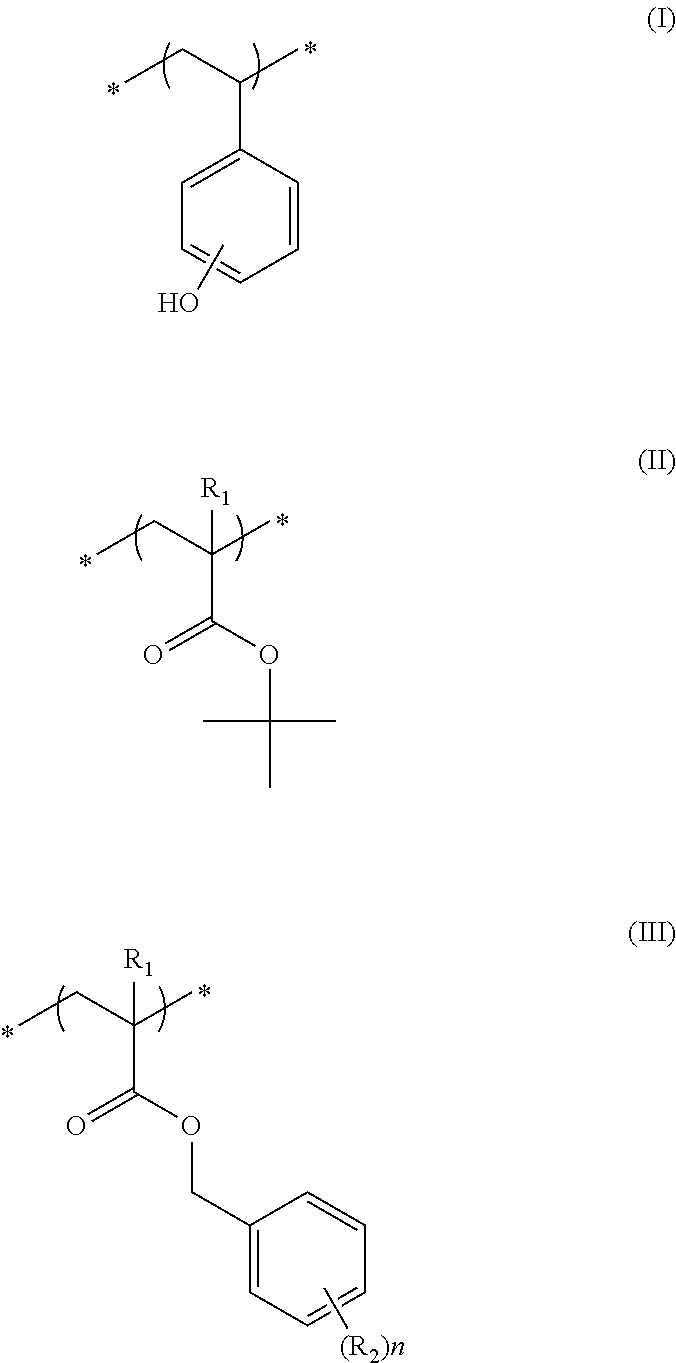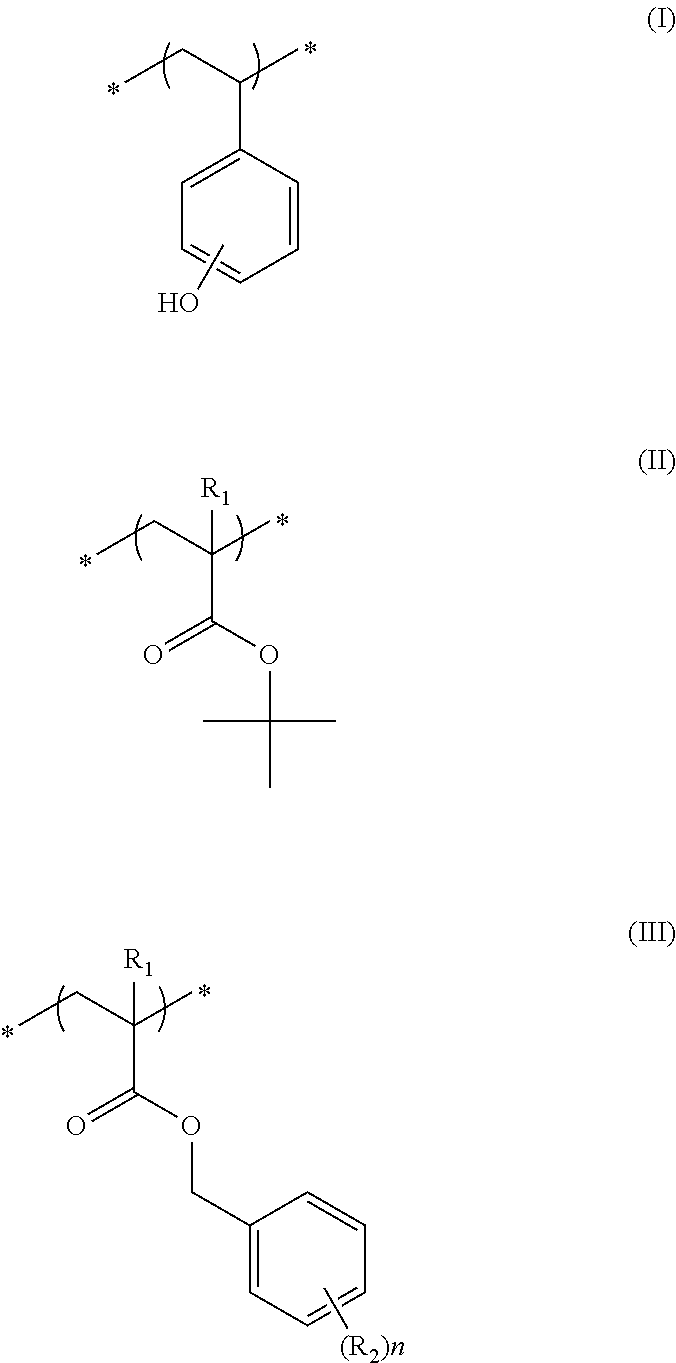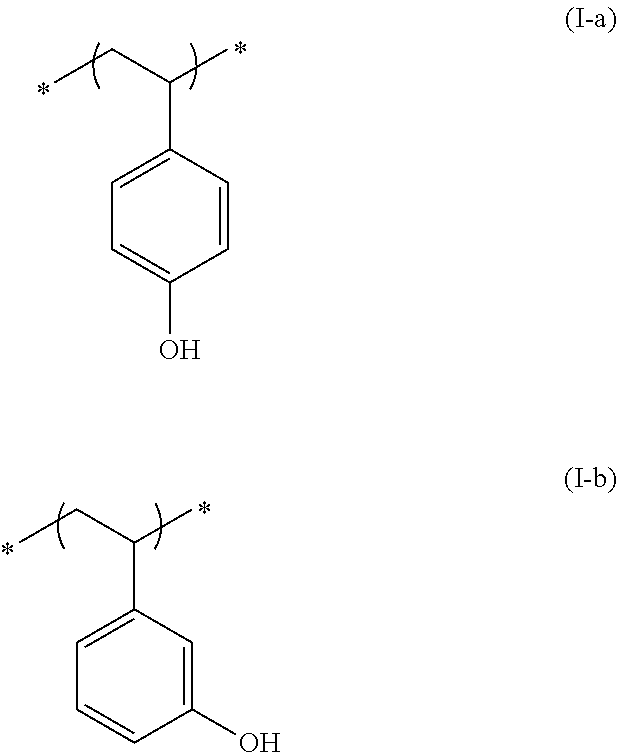Actinic ray-sensitive or radiation-sensitive resin composition and method of forming pattern therewith
a technology of radiation-sensitive resin and resin composition, which is applied in the direction of optics, basic electric elements, electric devices, etc., can solve the problems of increased probability of defects, increased solubility of alkali developer, and inability to form ideal rectangular patterns, etc., to achieve desirable pattern configuration, reduce line edge roughness, and excellent dry etching resistance
- Summary
- Abstract
- Description
- Claims
- Application Information
AI Technical Summary
Benefits of technology
Problems solved by technology
Method used
Image
Examples
synthetic example 1
Synthesis of Polymer ((A-1)-1)
[0204]Ethylene glycol monoethyl ether acetate amounting to 600 g was placed in a 2-liter flask and flushed with nitrogen at a flow rate of 100 ml / min for 1 hr. Separately, 105.4 g of (0.65 mol) of 4-acetoxystyrene, 35.6 g (0.25 mol) of t-butyl methacrylate, 17.6 g (0.10 mol) of benzyl methacrylate and 2.30 g (0.01 mol) of polymerization initiator V601 (produced by Wako Pure Chemical Industries, Ltd.) were dissolved in 200 g of ethylene glycol monoethyl ether acetate. The thus obtained solution was flushed with nitrogen under the same conditions as mentioned above.
[0205]The 2-liter flask in which ethylene glycol monoethyl ether acetate was placed was heated until the internal temperature thereof was increased to 80° C. Further, 2.30 g (0.01 mol) of polymerization initiator V601 was added and agitated for 5 min. Thereafter, the above monomer mixture solution was dropped under agitation over a period of 6 hr. After the completion of the dropping, heating a...
PUM
| Property | Measurement | Unit |
|---|---|---|
| mol % | aaaaa | aaaaa |
| dispersity | aaaaa | aaaaa |
| molar ratio | aaaaa | aaaaa |
Abstract
Description
Claims
Application Information
 Login to View More
Login to View More - R&D
- Intellectual Property
- Life Sciences
- Materials
- Tech Scout
- Unparalleled Data Quality
- Higher Quality Content
- 60% Fewer Hallucinations
Browse by: Latest US Patents, China's latest patents, Technical Efficacy Thesaurus, Application Domain, Technology Topic, Popular Technical Reports.
© 2025 PatSnap. All rights reserved.Legal|Privacy policy|Modern Slavery Act Transparency Statement|Sitemap|About US| Contact US: help@patsnap.com



